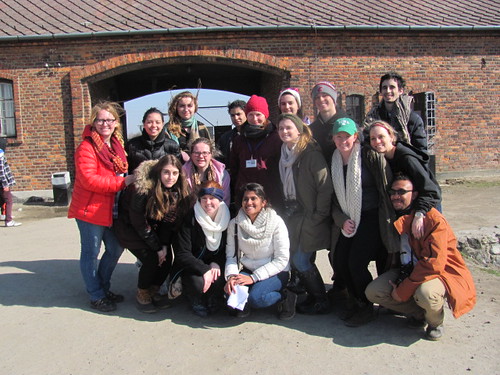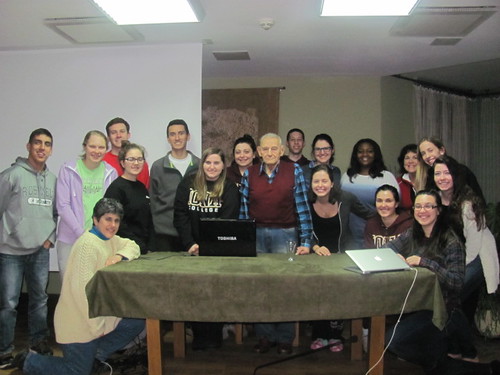 |
| Remains of entry way to gas chamber in Auschwitz II |
 |
| Pond in Aushwitz II filled with ashes of the murdered. This is also the location of our prayer service in honor of all the lost lives. |
Something I do not think I will ever fully understand is why there was and is so much hatred in the world. I cannot fathom why the Nazis thought murdering an entire population would solve Germany's problems. It is hard to understand the Nazi ideologies
and what caused them to seem appealing to the Germans. In another religion
class, we questioned if Hitler can ever be forgiven and have salvation with God.
In Poland, we somewhat discussed this. The only people who can truly forgive
Hitler and the Nazis are the victims or survivors. Jewish and Christian people
today cannot grant forgiveness and redemption for actions that took places
decades ago. The idea that Hitler can be forgiven for his horrific plans of
extermination makes me angry and I cannot imagine living in a world where his
sins are forgiven. However, can a
perpetrator be a victim? There were many Germans who decided freely to partake
in the violent and hateful actions, but there were also some that may have been
forced into the job. There had to have been some SS guards who were unaware of
the extent of their jobs. Perhaps some worried about what would happen to their
families if they did not comply.
While at Auschwitz II, I experienced a special moment.
When we arrived at the remains of the gas chamber, I was completely numb and
overwhelmed with sadness, sorrow, and anger. I sat on the stairs silent crying
for a few minutes until one of my classmates, Sia, came over to comfort me. We
walked over towards some trees and I started hearing beautiful chirping of
birds, sounds I did not hear a few minutes prior. To me, this moment helps me
see the light in darkness. God did not abandon his people during the Shoah, He was
present in the hearts of the prisoners and shed His grace through the selfless
actions of the prisoners.
It is difficult for me to discuss my experiences with
people who were not on the trip with us. We had such a unique and tremendous
encounter that I do not want to dismiss its significance with the answer “good”
when asked how the trip was. We learned from extremely well-versed professors,
tour guides, and religious fathers and sisters about various perspectives on
the Holocaust. Going into this class, I thought I had a lot questions
surrounding the Shoah, but while studying and reflecting in the places where so
much suffering happened, I bombarded myself with dozens of more questions. Why
did God let the Shoah happen? Where was human dignity? Why is there so much
hate? I had a difficult time finding the answers, but after truly reflecting
and processing my thoughts, some answers are clearer to me. God is found in the
hearts of the prisoners in the camps. The biggest sacrifice made by Fr.
Maximillian Kolbe is an example of the love and human dignity that exists in
the most horrific situations. He switched places with a father and husband in
line for the starvation cell. The man who he saved ended up surviving the war.
Such selfless actions prove the magnificent workings of God through His people.
I used to think that God should have never let the Holocaust happen. However,
God gave humans free will hoping they would choose good. Sometimes people
choose evil and it is not God’s fault, rather He is ashamed when humans choose
evil. God gave people the ability to choose good or evil which created human
worth and dignity.
I am forever thankful to have had the opportunity to
study in Poland with wonderful and intelligent professors, such passionate
students and thinkers, and Holocaust educators. I will truly never forget the discoveries
we made, the lessons we learned, and of course, I will never forget the
innocent lives lost during an unfortunate time in human history.
Marina Falisi










































